Around eight o’clock on the night of November 30, 1914, William H. Dickens sat reading in his comfortable library with his wife nearby. The couple, who had five grown children, lived in their spacious home at Coffman and Third Avenue in Longmont, Colorado. Without warning, someone outside in the dark shot into the room. The bullet, fired from a high powered rifle, traveled through the window, hit Dickens in the back and came out the other side, grazing Mrs. Dickens’ cheek before embedding in the room’s brick wall. About ten minutes later, William H. Dickens died of his wound.
The news of Dickens’ shooting was covered in papers across the state. William Dickens was one of the most prominent men in the region, probably the wealthiest man in Longmont. A fellow named M. Swallow, who had recently argued with Dickens, was arrested and later released. Papers also suspected a mysterious prankster who’d been running around the neighborhood ringing doorbells. Some folks theorized that the killing was in revenge for Dickens’ involvement in the Sand Creek Massacre a half a century earlier. No one doubted that the successful banker and entrepreneur had made a few enemies along the way.
William “Bill” Henry Dickens died the way he was born – in a crazy unexpected way. Described by one newspaper as “scornful of formalities, rough in speech and dress,” he came into this world on May 25, 1843 at sea, while his parents were crossing the Atlantic Ocean on a ship called the Johnny Walker. His parents and elder sister were en route from England to Quebec. The family soon landed in Wisconsin, where his father survived only a few years.
Sixteen year old Bill Dickens came to Colorado in 1859, arriving May 1 among the earliest of the European settlers. He came with his mother and her second husband, Alonzo Nelson Allen. Mr. Allen filed a homestead claim and built a log cabin near the St. Vrain River, in an area that would become today’s Longmont. Soon, a stage line began running along the Cherokee Trail, and the Allens built and operated a stage stop.

George Allen, Dickens' half brother, on the horse that Dickens reportedly rode at the Sand Creek Massacre. Courtesy of Longmont Museum.
In 1864, Bill Dickens, at 21 years old, signed up with the Colorado Third Cavalry. That November he was part of the Chivington group who attacked the peaceful Arapaho and Cheyenne settlement at Sand Creek, an horrific slaughter of mostly elders, women, and children that is considered by most historians to be the darkest and most notorious event in Colorado history.
After mustering out of the cavalry, Dickens focused his efforts on his own homestead claim next to that of his stepfather. He and others developed a workable irrigation system. He grew wheat, alfalfa, potatoes, sugar beets; he ran cattle, horses, and sheep.
In December 1876, the year Colorado became a state, he married Ida Kitely in Longmont. They had five children: William, Rienzi, Mary, Artalissa, and John –born between 1878 and 1888. All of the children were grown at the time of his shooting – between the ages of 27 and 37.
Over the years, Dickens became one of the most prominent members of the community. He developed a freighting business, transporting goods between Denver and Cheyenne. Eventually, he established the Farmers Mill and Elevator Company, which at one time produced six hundred sacks of flour a day. He was also an original founder of the Farmers National Bank and on the board of a sugar company.
In an effort to bring some culture to Longmont, he built the Dickens Opera House at the corner of Main and 13th Streets in 1881.
One theory about the killing that soon circulated after the shooting had its roots in an event that took place back in 1870. A man named Billy DuBois of Larimer County reportedly killed a man named Kinney, then escaped into the mountains. William Dickens and other men formed a posse and cornered DuBois at the mouth of Left Hand Canyon. DuBois tried to shoot his way out and was shot in the process. Billy DuBois swore vengeance on Dickens before dying. DuBois’ brother, James E. DuBois, had been clerk of Larimer County and later worked on the state board of agriculture. At the time of Dickens’ killing, the brother had been dead for over a decade.
On Friday, December 3, W.H. Dickens was buried at Longmont’s Mountain View Cemetery.
Immediately after the ceremony, police arrested their suspect in the murder: W.H. Dickens’ own son.
The basis for the arrest of Rienzi Dickens was the fact that, a month before the shooting, he had purchased a high-powered gun in Denver. He had used part cash and part check to pay for the weapon. Later, he bought a silencer. When police heard from a clerk at the store about these purchases, they searched Rienzi’s home. There, according to newspaper accounts, they discovered the stock of the gun hidden behind a trunk, along with a box of cartridges, five of which were missing. Elsewhere in the home, they found the silencer at the top of a rafter in his garage and the barrel was in a barn a block away. Detectives were also able to determine that Rienzi was not at home when the shooting occurred.
At first, Rienzi denied any knowledge of such a gun but after being confronted by the pieces they’d found in his house, he admitted he’d purchased it. He admitted having fired the gun “five times,” though he said he’d been target shooting.
Additional facts soon emerged about Rienzi – that he had debts to the tune of $35,000 to $40,000 – a hefty sum in 1915. Police said his motive was his hopes of gaining his inheritance sooner rather than later.
Police told reporters that they believed he meant to kill his mother as well. They concluded this because of the positions in which the man and his wife had been sitting – in a straight line from the angle of the shooter. In fact, according to one newspaper account, Mrs. Dickens had just entered the library and taken a seat near her husband when the shot came. She was grazed by the bullet that killed her husband.
Newspapers soon reported that William Dickens’ will left his entire estate, a fortune of $300,000 to $500,000, to Mrs. Dickens. Other rumors soon circulated that Rienzi and his siblings had recently been informed by their father, who was very ill at the time, that they were being left out of the will. It came out later that Dickens had died intestate (without a will), and that his fortune turned out to be about $236,000. The article said the money went to his wife and children.
After his arrest, Rienzi made a statement to reporters: “As sure as I am sitting here I am as innocent as anyone in this town. I did not kill my father. When the officers had me last night I said a lot of things I should not have said. They scared them plumb out of me. Some of the answers they made me give made it look bad for me, I know. I would not have said them if I had had a friend or a lawyer with me to help me.”
Rienzi’s mother and siblings stood by him. They hired their own gun expert who concluded that the gun found in Rienzi’s home and the gun that shot Dickens were not the same weapon. Things looked even better for Rienzi when Walter L. McCaslin, a cashier at the Rienzi’s Farmers National Bank, took officers to a ranch house and showed them a fence post riddled with five bullet holes – put there, he said, by Rienzi who was target shooting.
At the end of December, Rienzi pleaded “not guilty” at his arraignment. During the hearing, his older brother William stood by his side. Rienzi and his attorneys also asked for bail.
In early January, Rienzi was released on bond. The DA had vigorously fought his release, but the judge determined that the evidence was only circumstantial. The judge then reduced the DA’s requested $50,000 bond to $37,500. The money was furnished by the Dickens family. Papers reported that during this hearing, the elderly Mrs. Dickens approached her son with open arms and kissed him warmly. She had reportedly not seen him since his arrest.
During the next couple of months, the Dickens family hired a team of private detectives. These men soon focused on a “range rider” named John Endsley, who reportedly had a resentment against Dickens, for whom he once worked. The private detectives said that Endsley was known to be drinking in Longmont on the day of the Dickens shooting, that he had bought a bottle of alcohol and that this same bottle had been found in the alley near where the shooter stood.
Endsley countered these charges by saying the private detectives were trying to frame him. He said he’d been followed, plied with liquor until he was sick, and then attended to by a phony priest who begged him to confess. Endsley also had another strange story to tell: He said that he had long ago witnessed William Dickens murder an Indian woman and her baby on the St. Vrain River. Dickens knew that Endsley had witnessed the killing and had always hated him for it.
Authorities arrested Endsley and interrogated him but quickly let him go. Papers reported that Dickens and Endsley encountered each other in the hallway of the courthouse and engaged in a stare-down. Finally, Endsley said, “Well I guess my story hangs together. The sheriff has been able to trace me and I’m stayin’ here now just because I want to.” Dickens’ attorney Jacob Schey insisted Endsley was guilty but that he’d been arrested before they were ready to prove their case – something that never happened.
Rienzi’s trial started on April 24 1915 in Boulder County District Court under Judge Neil F. Graham. The defense immediately asked the Court to disqualify Boulder County Sheriff Sanford D. Buster from serving papers or having any duties related to the case because he was “extremely prejudiced.” Judge Graham sustained the motion.
Almost immediately after the trial began, yet another suspect appeared on the radar, known only as “XXX.” Rienzi’s attorney, Jacob Schey, made another announcement. He had received a confession in the mail:
“Mr. Jacob Schey, Boulder Colo – Dear Sir: Please don’t let them convict Rienzi Dickens. I am the murderer. I’d kill any man who would do me the way that old — — did. I shot him through the window with a rifle which I afterward buried in Loveland…..For God’s sake don’t let them convict an innocent man. Some day they will be sorry. I did it because he had it coming. Signed XXX.”
Apparently the letter wasn’t enough to convince anyone of anything and Rienzi’s murder trial continued.
Rienzi Dickens himself took the stand in his own defense. He was cool and calm, according to reporters, but his wife “almost continually burst into sobbing.” The trial lasted several weeks and went to the jury May 26. The judge instructed them that they could find Rienzi not guilty, guilty of first degree murder, or guilty of second degree murder. On May 28, the jury came back with their verdict: Guilty of second degree murder.
At the announcement, Rienzi’s wife fainted. The penalty would be from ten years to life in the state pen. Not surprisingly, Rienzi’s attorneys announced their intention to ask for a new trial and threatened to take it to the United States Supreme Court if their motion was denied. They were given 45 days to present their application for a new trial. Meanwhile, certain newspapers questioned the validity of a second degree verdict, stating that the man was either guilty of first degree murder or innocent.
Despite being convicted, the defendant was still out of jail on a new $40,000 bond. According to one paper, he took this opportunity to go on a camping trip. The defense meanwhile came up with a new witness who said he saw Rienzi driving his automobile in front of his brother’s house at 7:30 on the night of the murder. (It wasn’t clear how far away that was from the murder scene.) They also came up with another arms expert who was willing to state that Rienzi’s gun was not the murder weapon. Meanwhile they also leveled accusations against Sheriff Buster for prejudicing the jury against Rienzi. (Buster owned a Boulder newspaper.)
In late January, after three days of court arguments, Judge Graham denied the request for a second trial and sentenced Rienzi to 18 to 27 years in the state pen. Dickens was picked up and taken to the county jail.
In October of 1919, the Supreme Court of Colorado ruled that Dickens would have a new trial. The ruling said that the judge should not have allowed the option of second degree murder, as it was quite clear that an assassin had lain in wait in the alley behind the house and fired when he saw there was a clear shot at his target. This made it first degree murder.
Rienzi went back to court, this time in Greeley, in October 1921, after a three year wait. One paper reported that he had spent this time in Long Beach, California. Once again, the trial focused on whether or not the fatal bullet had come from Rienzi’s gun. In mid-October, 1921, the jury on Rienzi’s second trial deliberated for fifteen hours. When they returned they handed down a verdict of “Not Guilty.”
Rienzi Dickens returned to Long Beach where he spent the rest of his life and died there in 1961.
The murder of W.H. Dickens was never solved. Folks say that the Dickens home at 303 Coffman Street is haunted.
![]()
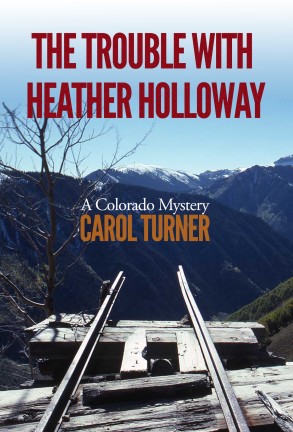 Check out my novel, THE TROUBLE WITH HEATHER HOLLOWAY, available on amazon kindle or on any device using the amazon kindle app.
Check out my novel, THE TROUBLE WITH HEATHER HOLLOWAY, available on amazon kindle or on any device using the amazon kindle app.
Her first week on the job, and Marshal Beth Mayo is hit with a sex assault case. It’s a nasty shock for the bucolic mountain town of Sugarloaf and for Mayo, who is still recovering from her husband’s death. Her initial skepticism grows into disbelief over the victim’s zany story, and she dismisses the case as a false report. Unfortunately, the same woman is soon discovered in the ruins of a ghost town, most definitely murdered.
Mayo unravels the complex case through a parade of colorful suspects and misfit family members, all the while following a common thread from 150 years earlier — Colorado history’s most notorious event, the Sand Creek Massacre.

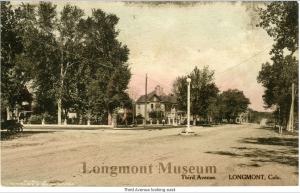

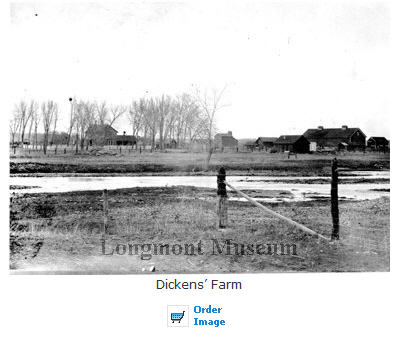
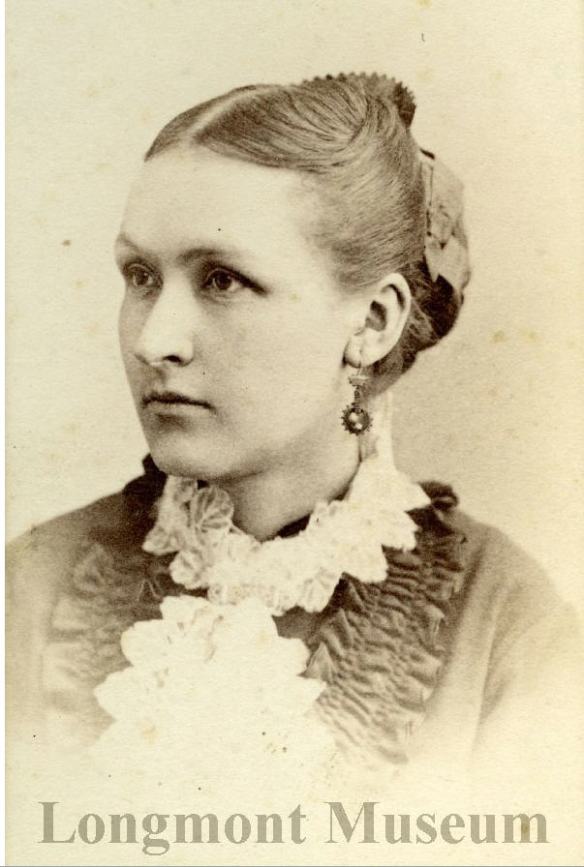
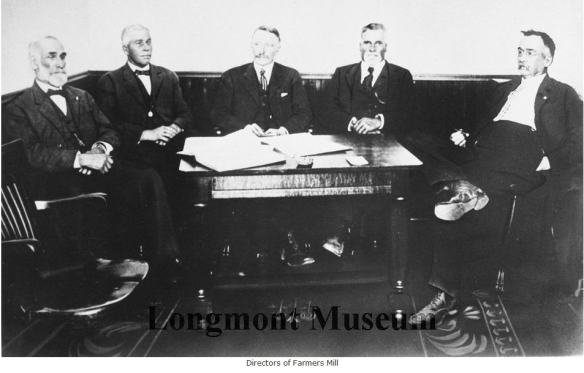



I am one of Rienzi Dickens 18 grandchildren and this is the most detailed account I’ve read about the family tragedy. My mother never spoke a word about it. My brother happened upon the information in 1976. Even then our mother could not speak of it to us.
Anne DeWitt
Irvine, CA
Hi Anne, Thanks for your comment. It’s not too surprising the story wasn’t discussed in the family. That’s usually how such things were handled back in the old days. It was probably a forbidden subject in your mother’s household when she was growing up — even though Rienzi’s family stood by him. If you are interested, there are a lot of articles about it in old newspapers in the Colorado Historic Newspaper Database online. Carol
Hi Anne
My name is Glen Pollard Mary Dickens/Pollard was my grand mother, my father grew up at 307 Coffman Street (I don’t think 303 is correct). I know that alley, I know that window. Don’t know enough of the story, you got farther with it then I did. Last spring all my my girl cousins and 2nd cousins had a reunion in Longmont. I asked that they share stories and notes bur everyone seemed pretty tight-lipped. I do know that my grandmother cancelled one of the Denver papers in a rage over the coverage.
Mother spoke occasionally about her many Longmont cousins left behind. California was an escape, offered to her parents to keep the children from growing up in a small town with long memories! I have new respect for mother, and her suffering and courage as a small child. Only she and her older sister Genrose knew what had happened was a tragedy.
Anne
MY grandfather was William Dickens. My father, Ralph M. Dickens had some references to this story. I remember listening with awe and amazement the recounting of this history. I love Longmont and the very fond memories of weekends and summers at the farm house. Reviewing these articles are my way of connecting to my past. Thank you, David R. Dickens
Hello Uncle David! I am the niece of David R. Dickens, the granddaughter of Ralph M. Dickens, and the great great granddaughter of William H. Dickens. I’m enjoying the history of the family, and am forever grateful to those who have documented it. Many thanks for putting this together!
I am Annette Ferguson Vesser, granddaughter of Lloyd Dickens, brother to Ralph Dickens. I learned of this story after the passing of my grandfather and look forward to hearing more if you have stories to tell.
Sue Connelly owns Rabbit Hill Graphics in Longmont. She wrote and published the history of the William Dickens assassination in November 1915. You can locate her online. .
Interesting, at least to me, Charles Dicken’ father was in debtors prison. That’s why the noted author had to leave school and go to work. This is where he got the inspiration for Oliver Twist. Charles Dickens wife left him after 22 years of marriage and 10 kids when she received a bracelet (engraved) that was in intended for Mr. Dicken’s 18 years old mistress. The children were in denial about the affair, the couple never formally divorced. The son, Francis Dickens was a Canadian Mounted Police. The Canadian Mounted police were deployed against the Cree Indians. He died at the age of 42 of unspecified cause, and was in debt due to ill health. Interesting, William Henry was also in the Cavalry, and his Rienzi was 34,000 dollars in debt.